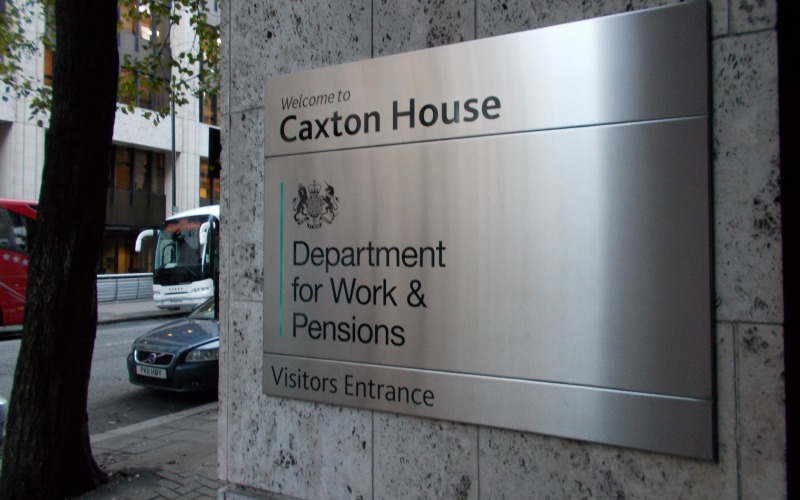The Department for Work and Pensions (DWP) has caused confusion after refusing to confirm what appeared to be a huge increase in funding for the programme that supports disabled people in the workplace.
The spending review, published on Wednesday, included the announcement of a “real terms” increase in spending on the Access to Work (AtW) scheme, which the government said would help “a further 25,000 disabled people each year to remain in work”.
If this was accurate, it could see the numbers helped through the scheme – often described as the government’s “best-kept secret” – increasing from about 37,000 to more than 60,000 a year.
But confusion now surrounds the pledge, after DWP press officers declined this evening (Thursday) to confirm the figures.
This year, there have been repeated protests over the introduction of a new cap on AtW support packages, limiting annual awards to one-and-a-half times the average salary.
Campaigners have warned that this will “actively discriminate” against Deaf and disabled people with high support needs in senior positions, particularly those whose first language is British Sign Language.
At its peak, in 2009-10, under the last Labour government, AtW was supporting more than 37,000 disabled people, but this plunged under the coalition to 30,780 in 2011-12, although it has increased again in the last three years.
The latest figures, published in October, show 36,820 disabled people were helped in 2014-15, still below the figure of 37,270 for 2009-10.
Despite the increasing number of claimants, research by disability organisations earlier this year found that nearly all AtW claimants whose entitlements had been reviewed were having their support cut.
DWP has so far failed to repeat or explain the claim in the spending review that the government will now support an extra 25,000 disabled people in work.
A DWP spokeswoman said in a statement: “We continue to secure the long-term future of Access to Work so that it remains a demand-led scheme and open to any disabled person facing additional costs in doing their job.
“Our spending review settlement will enable us to increase real terms spending on Access to Work and reach more people than ever before as we continue to halve the disability employment gap.”
George Osborne, the chancellor, also told MPs in his spending review speech on Wednesday that he intended to meet his party’s pre-election pledge to cut welfare spending by another £12 billion a year by 2020.
He said he wanted Britain to move from being “a high welfare, low wage economy to a lower welfare, higher wage economy”.
But Labour’s shadow chancellor, John McDonnell, said the austerity measures introduced by the coalition in the last parliament had already hit disabled people “18 times harder than anyone else”.
And Tim Farron, leader of the Liberal Democrats, said the £12 billion cuts were “purely ideological” and “not necessary”.
There was also confusion over Osborne’s comments about an increase in “conditionality” –strict rules imposed on benefit claimants.
The chancellor told MPs: “So today we confirm we’ll extend the same support and conditionality we currently expect of those on jobseeker’s allowance to over one million more benefit claimants [by 2020].
“Those signing on will have to attend the jobcentre every week for the first three months.”
Many campaigners feared he was referring to claimants in the work-related activity group of employment and support allowance (ESA), who would be forced to meet stricter conditions as a result of the announcement.
But DWP confirmed later that Osborne had instead been referring to the extension of conditionality through the roll-out of the new universal credit, affecting “people who previously claimed housing benefit or child tax credit only, and out-of-work partners of benefit recipients”.
She added: “Under universal credit, work coaches will also be able to apply their judgement to support claimants with health conditions and disabilities before the outcome of the work capability assessment where this is appropriate.
“These changes have only been introduced in universal credit, and support will be tailored to the claimant’s circumstances and capabilities.
“Claimants will not be asked to undertake any activity that would put their health at risk.”
The spending review document also revealed that DWP will be scrapping both the mainstream Work Programme and Work Choice, its specialist employment programme for disabled people, and replacing them with a single new “health and work programme”.
It will be publishing a white paper on improving employment support for disabled people in 2016.
There will be more than £115 million funding for a new joint work and health unit, with at least £40 million of that to pilot new ways to link the health and employment systems.
Work and pensions secretary Iain Duncan Smith said: “This spending review will see the start of genuine integration between the health and work sectors, with a renewed focus on supporting people with health conditions and disabilities [to] return to and remain in work.”
Disability Rights UK (DR UK) was critical of the overall package of DWP measures, despite the apparent increased funding for AtW.
A DR UK spokesman said: “We welcome the increase in support for the Access to Work scheme, which disabled people have long been calling for; and the announcement of the joint work and health unit.
“But the impact could be limited and we seriously struggle to see how the government will reach its aspiration to halve the employment gap for disabled people.
“In the meantime, people currently too sick for work face a cut in their benefit of £30 a week whilst the government pours money into poor value employment support programmes, makes disabled people respond to meaningless jobcentre requirements and fails to provide employers with the information and advice they need.”

 ‘We will not give a single inch,’ disabled activists vow, as Kendall publishes disability cuts bill
‘We will not give a single inch,’ disabled activists vow, as Kendall publishes disability cuts bill Rebel Labour MPs send final warning to ministers before disability cuts bill is published
Rebel Labour MPs send final warning to ministers before disability cuts bill is published Government offers three clues that it is set to plough ahead with cuts to disability benefits
Government offers three clues that it is set to plough ahead with cuts to disability benefits